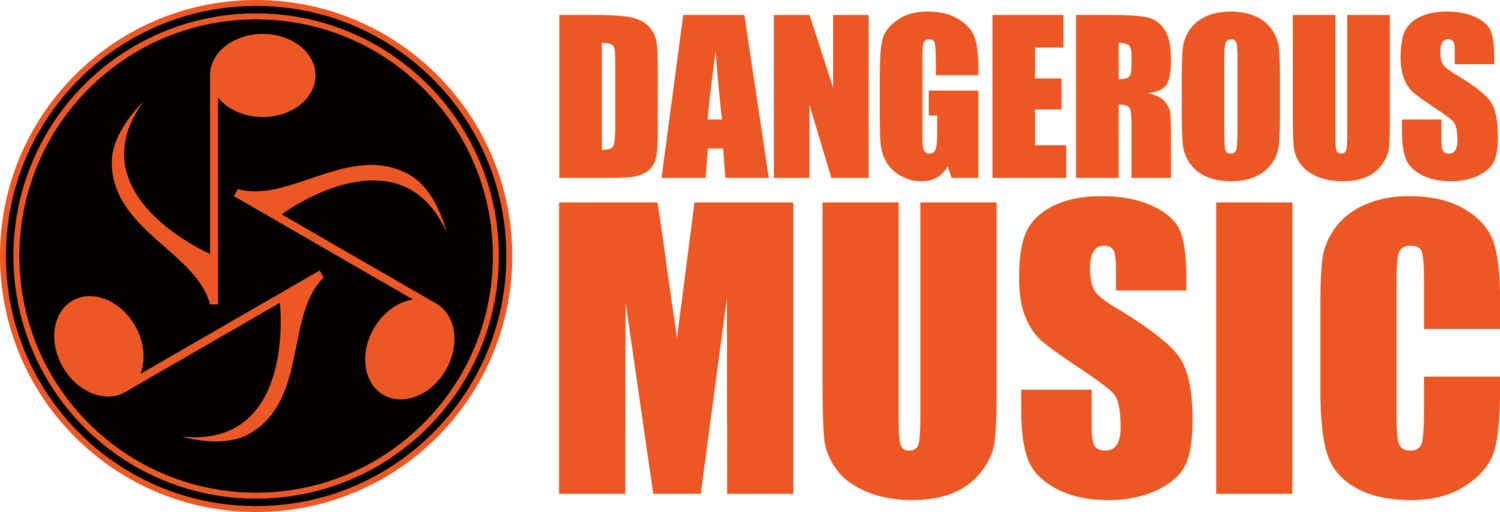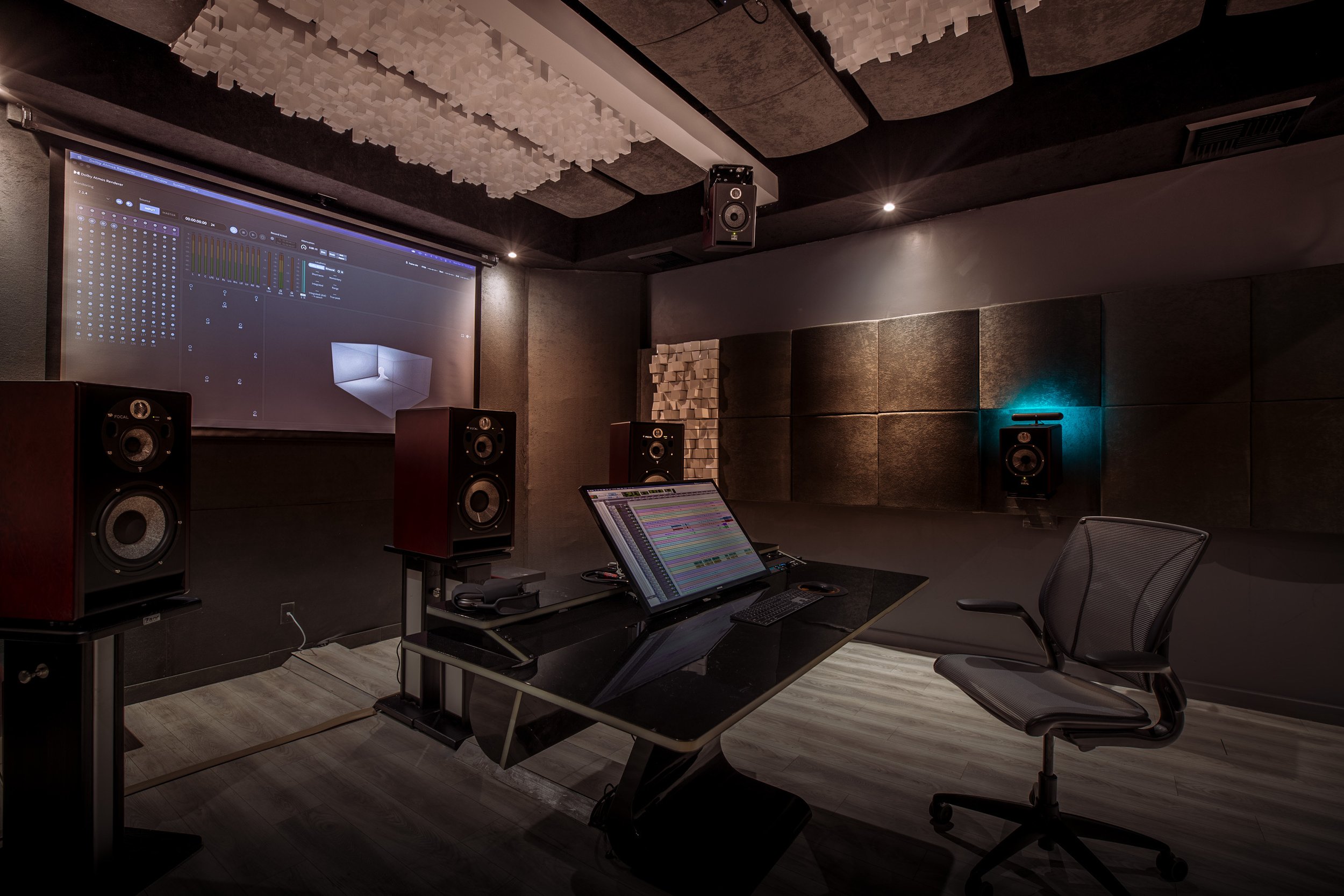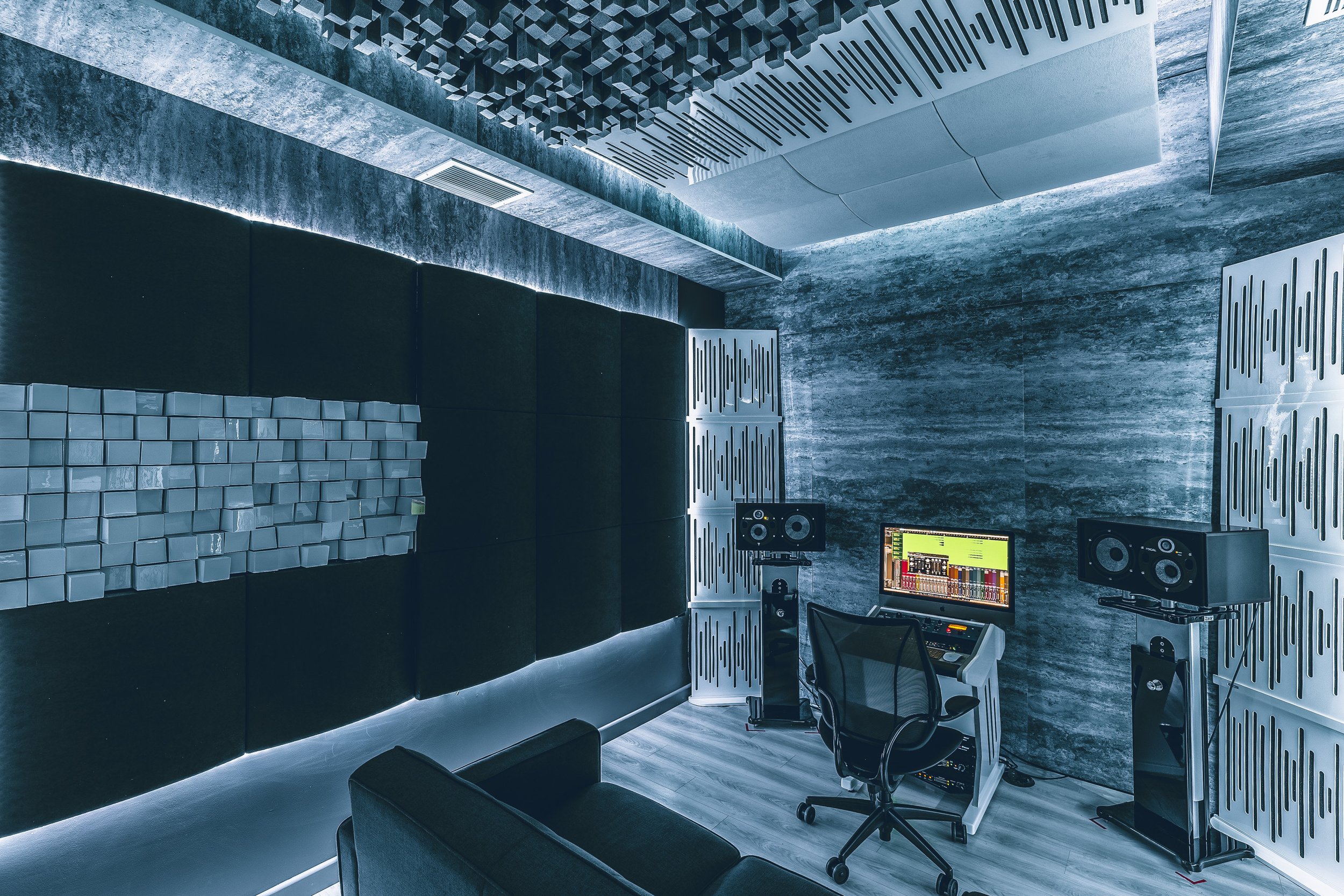STORMING THE CHARTS | LUCA PRETOLESI
“When you have gear that you can trust, your brain just executes ideas and you get into a creative flow. When you get into the mixing flow, you can work faster because you trust your feelings instead of thinking about the technical side.”
By Brooke Bilyj
Mixing and mastering engineer Luca Pretolesi has been crafting his signature sound since he entered engineering school at age 16. At that time, in the late 80s, electronic music was just starting to take off in Europe as synth-induced sounds from UK bands like Depeche Mode collided with early house music out of Chicago and Detroit. Breaking into the music industry in Italy just as the techno scene emerged, Pretolesi helped shape the explosion of electronic dance music (EDM) while carving out his reputation as a world-renowned audio engineer.
Over 25 years of experience and 30,000 hours in the studio have honed Pretolesi’s craft — landing him five Grammy nominations and three wins along with multiple Golden Melody Awards, Billboard hits, and platinum and diamond albums. Using a hybrid mixing and mastering approach, Pretolesi blends digital and analog tools to achieve his characteristic beat. This has attracted some of the most iconic electronic and pop musicians to his studio — including Major Lazer, Diplo, Enrico Sangiuliano, Alan Walker, Dillon Francis, BlackPink and most recently, Drake.
After working out of a small studio in Wynn Las Vegas since 2013, Pretolesi moved his company, Studio DMI, into its own space in 2019. With nine employees, including three engineers, Studio DMI touches about 1,000 songs per year, focusing predominantly on dance music along with a smattering of pop, K-pop, and Latin jams. As a hybrid mixing and mastering studio, DMI (which stands for Digital Music Innovation) provides a full spectrum of sonic sculpting services, depending on how much magic each project needs.
“There are a lot of traditional mastering studios and a lot of traditional mix engineers. We sit in the middle,” Pretolesi says, “so we take the song from whatever state it’s in to its final destination, whether it just needs stem mastering or a full mix and mastering. We take the song to its best possible version.”
About 10 years ago, Pretolesi set out to build a hybrid studio that could effectively handle every step of the spectrum from mixing to mastering, allowing him to move seamlessly from inside the box to outboard analog gear without any patch bays, extensive gear setups, or complicated recall. That’s when he discovered Dangerous Music. Since then, Dangerous gear has become essential to Pretolesi’s workflow — delivering the sonic results that have made him an esteemed EDM engineer.
Here’s how Pretolesi incorporates analog gear from Dangerous Music to transform dance tracks into chart-topping, crowd-thumping mega-hits.
Versatile Summing
Whether he’s mixing tracks from the ground up or just adding warmth to certain low-end stems, Pretolesi’s chain starts with Dangerous CONVERT Series D/A converters piped through the Dangerous 2-BUS+ 16-channel analog summing mixer. It creates a wide-open soundstage to give his mixes depth and punch without losing the crystal-clear sonic imaging that electronic music demands.
“How can I have a flexible summing device that can be extremely clean, but at the same time, can have a lot of character and tone? When the 2-BUS+ came out, it was almost like they read my mind,” Pretolesi says. “I can add the color and saturation and attitude of a console on certain channels, and have other channels that are purely clean and super precise for digital audio, so it’s the best of everything.”
Having worked on several SSL consoles before, Pretolesi appreciates the characteristically warm analog tone — but he also knows that tone doesn’t necessarily work for every song. When he needs to keep certain busses sharp without any coloration, the 2-BUS+ gives him the transparency that consoles never could.
“The 2-BUS+ is so versatile,” he says, “to be able to treat certain stems with harmonics, but then retain the synth and vocal, for example, to keep them completely clean.”
Instant Patching
Pretolesi’s 2-BUS+ plugs straight into a Dangerous LIAISON, enabling instant recall of analog patches through six stereo inserts. The LIAISON lets him compare the signal path between Buss A and Buss B with zero latency to take the guesswork out of his mixing and mastering decisions.
“One of the biggest problems for any engineer is to be able to make quick decisions,” he says. “When you patch, unpatch, and repatch a piece of gear, in those 45 seconds you lose the objectivity. I want to be able to make a decision within one millisecond whether it makes sense to do compression before EQ or EQ before compression. With a patch bay, it’s a guess, but the LIAISON gives me an actual comparison between A and B, so I can make the best decision.”
Using the “Flip” switch on his LIAISON, Pretolesi can reverse the order of inserts to test out different routing possibilities as he mixes. To speed up this process and expand the number of busses at his fingertips, Pretolesi uses two LIAISONS in his setup. One is dedicated to the full mix or drum mix, and the second one is hardwired into his digital audio workstation (DAW) through a converter just to process vocals.
Pretolesi snaps photos of his gear setup after every mix so he can recall settings in case of last-minute change requests from clients. “The Dangerous gear is easy to recall,” Pretolesi says. “I know exactly what was patched on each particular song, just by looking at the LIAISON.”
Balanced Compression
Pretolesi depends on the Dangerous COMPRESSOR to keep his mixes loud enough for the club while retaining the dynamics that he’s known for.
“My mixes are loud, but there’s a very dynamic translation,” he says. “My sound is wide with a good sense of depth, but with a clear priority because of the way I treat my kicks, snare and vocal.”
This balance between volume and dynamics can be tricky to master with analog gear. But the COMPRESSOR’s dual slope detectors give Pretolesi detailed control over fast transient peaks without lowering the average volume levels, so he can achieve maximum loudness without sacrificing clarity of the individual stems.
“I rarely compress the full range,” he says. “I like to use the detector to compress only the mid-range, so I leave the bottom and top untouched. It allows a less compressed feeling on the high and low frequencies, which are the frequencies that are more sensitive to compression.”
Creative Conversion
The Dangerous BAX EQ provides the final stage of equalization before Pretolesi captures his mix with the Dangerous CONVERT-AD+. Although some engineers worry about potential degradation from the extra analog-to-digital (AD) and digital-to-analog (DA) conversion, Pretolesi calls his Dangerous CONVERT his favorite tool because he uses it not just as a converter, but as an instrument.
“If we go back 30 years ago, it was normal to go through multiple stages of conversion because you would record on tape, mix through the console, then capture it again on another tape,” he says. “Now, when we listen to records from the 70s and 80s, there’s some magic from the tone generated by the tape. People are even buying plug-ins to emulate tape. If your AD-DA conversion gives you a certain tone and attitude, you can use that as an instrument.”
In the spirit of that classic analog tape sound, Pretolesi still prefers to print his outboard gear, even when he’s working in the box. “I like to commit with my gear, so I like to print,” he says, “and clipping on the converter is the ultimate commitment.” In fact, Pretolesi often uses the CONVERT to purposely clip his masters as a way of creating more headroom to achieve louder volume levels.
“I like to clip my converter, almost like pushing into a console very loud to get a certain tone,” he says. “When I use the CONVERT-AD+ to clip my master and get a certain tone on the low-end, I’m able to make different decisions based on the sound of the converter, instead of just using the converter to capture my mixes.”
For example, when he’s mastering house, trap, and hip-hop, clipping the low end off of the kick, bass, and 808 drums can create certain harmonics that make his mixes more dynamic.
“A lot of people who work fully in the box try to emulate the converter clipping using soft clipping or limiters, but you don’t get the same depth you’re getting from analog gear,” Pretolesi says. “Instead of just using limiting to get a certain density, loudness, or sustain on the low end, I like to use a mix of limiting and clipping from the converter. The AD+ is forgiving, so I’m able to get a louder RMS level and a certain thickness on the envelope of the kick with the bass.”
By clipping the audio signal with the CONVERT-AD+, “you get a certain tone and harmonics,” Pretolesi says, “and I see that as a great creative tool.”
Consistently Making Hits
Depending on the objectives of each song he’s mixing or mastering, Pretolesi might work more or less in the box and lean on his analog gear to varying degrees. If he’s building a mix from the ground up, for example, he’ll likely run everything through his summing mixer, “using the tone and color of my analog gear to build the mix,” he says.
But a lot of his dance projects involve stem mixing with preprocessed vocals and unprocessed drums. In those cases, he’ll keep some elements, like synth and vocals, inside the box, then run drums and other instruments through his summing mixer so he can treat them with analog gear before converting through the AD+ back into the DAW. “Certain elements are completely untouched, and other parts have color and attitude from the analog gear,” he says.
No matter what he’s mixing and mastering or how he processes each stem, Pretolesi’s Dangerous chain lends a reliably consistent quality to every track he touches. “Regardless of the types of mixes I’m getting, there’s a certain tone and aesthetic coming from the combination of my decisions and my gear,” Pretolesi says. “When you have gear that you can trust, your brain just executes ideas and you get into a creative flow. When you get into the mixing flow, you can work faster because you trust your feelings instead of thinking about the technical side.”
Pretolesi’s Dangerous-powered creative flow has produced a steady stream of Grammy-nominated hits across genres — from J Balvin and Willy William’s “Mi Gente,” which was nominated for a Latin Grammy for Record of the Year; to Snoop Lion’s “Reincarnation,” which nabbed a nomination for Best Reggae Album; to Steve Aoki’s “Wonderland,” which was nominated for Best Dance Album, and “On My Mind” by Diplo and Sidepiece, for Best Dance Recording.
A longtime collaborator with Diplo, Pretolesi has been involved in practically all of his projects over the last decade, including Major Lazer, his electronic dancehall trio, and Jack Ü, his collaboration with DJ Skrillex. In fact, Pretolesi says Major Lazer’s “Lean On” from 2015 is one of the biggest hits he’s ever mixed — peaking at No. 4 on the Billboard Hot 100 and No. 2 on the UK Singles Chart, becoming one of the most streamed singles of all time.
“Diplo is my most consistent client,” says Pretolesi, who’s currently mixing Diplo’s new Major Lazer LP. “He’s a busy touring DJ, so my role is important to keep his record release schedule consistent. He knows how he can use my touch to improve a song so he can invest less time, knowing what I can do. I’m getting raw mixes and he’s giving me more freedom in how I approach those mixes, so we work almost like a production team.”
Crossing Genres
As much success as Pretolesi has seen across the EDM scene, he says his latest project with Drake represents a new peak in his career. Drake’s seventh studio LP, “Honestly, Nevermind” took an abrupt about-face from hip-hop and trap into house, and who better than Pretolesi to guide Drizzy from the top of the R&B charts into the domain of dance? After 15 years of working with the same mixing engineer in Canada, Drake’s long-time executive producer, Noah Shebib, better known as 40, asked Pretolesi to mix and master the new project.
“This album has a different tone, a different approach. It’s touching the dance scene,” Pretolesi says. “40 teamed up with me to bring a different perspective, to retain Drake’s signature vocal sound but with a more dance point of view.”
The most challenging part of the project was that Pretolesi only had 25 days to mix the entire album before Drake’s surprise release date, which he announced on Instagram just hours before his midnight launch in June 2022. To expedite the mixing process on such a tight timeline, Pretolesi and 40 focused on a few key songs first, “to build our own reference and create the relationship of vocal versus the music,” he says. “Then, we could have all the other songs sit around those three.”
Pretolesi’s ultimate goal was to make all the tracks sound like they belonged on the same album, even as the songs shifted from hip-hop to dance — while also maintaining Drake’s characteristic sound as he dove into a new scene with a new production team.
“We want to make sure that if you skip through songs on the album, even if we’re changing the style, it still feels cohesive. It feels like it’s an album,” he says. “The part that I want to feel put together is the relationship of vocals versus instruments, so it all feels like it’s coming from the same session.”
To achieve that balance, Pretolesi leveraged the Dangerous setup in his studio to create mixing templates to replicate the same depth and tone across every track on Drake’s album. Debuting at No. 1 on the Billboard 200 with 204,000 album-equivalent units (which includes traditional album sales along with streams and downloads), “Honestly, Nevermind” became Drake’s eleventh No. 1 record, breaking several streaming records for dance.
As with other projects Pretolesi has touched, the album’s success has as much to do with his expert engineering decisions as it does with his gear. “The Dangerous tone is part of my sound,” Pretolesi says. “It integrates into my workflow, so my mixes translate in a dynamic way.”










